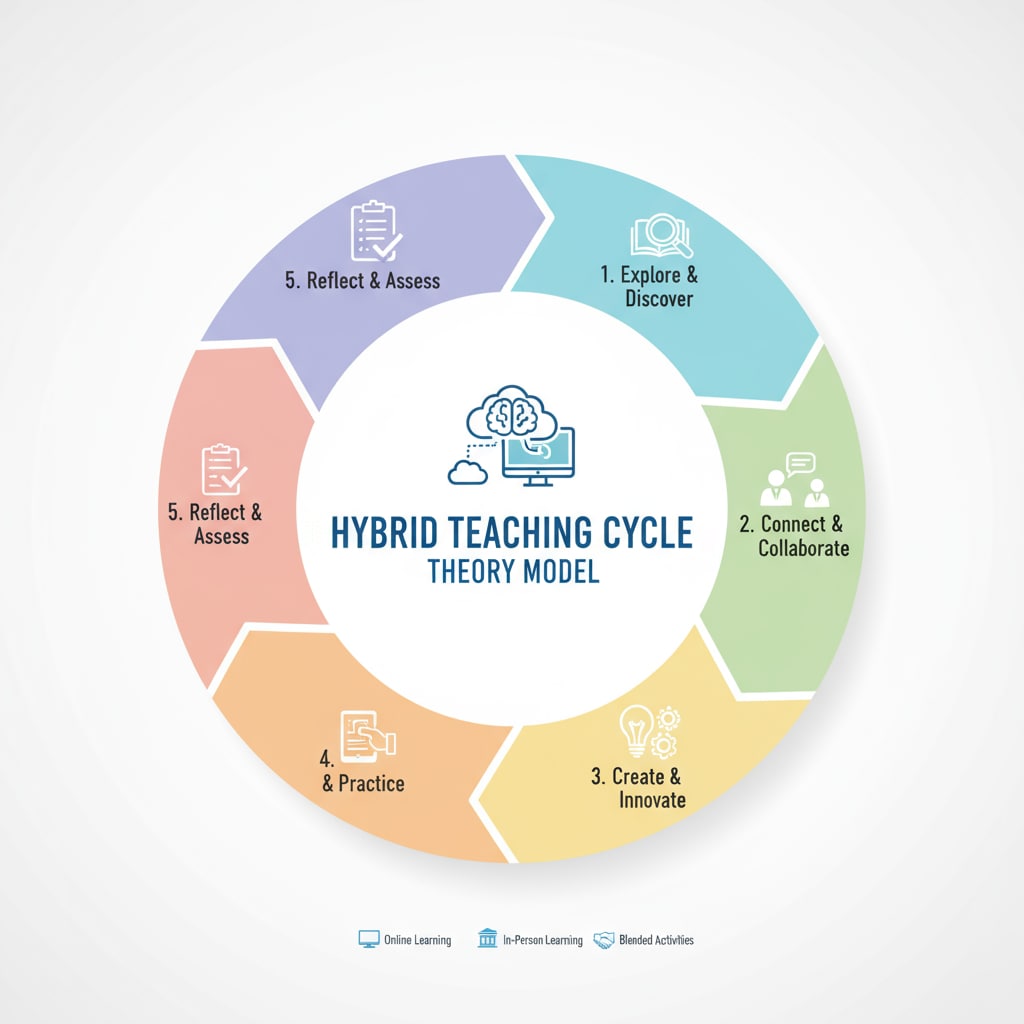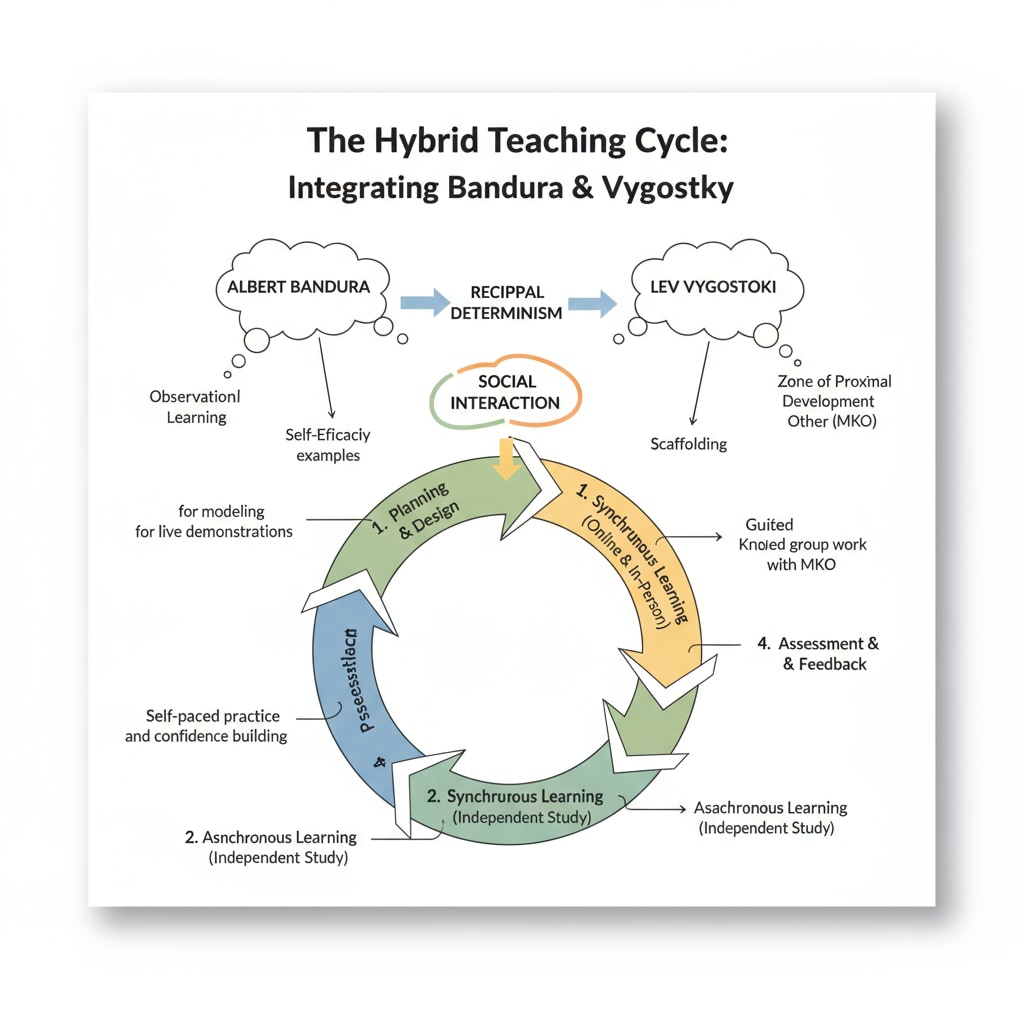The Hybrid Teaching Cycle, Instruction and Guidance, and Educational Models have revolutionized the landscape of K12 education. In this article, we will explore a new theory model that combines transmissive and guiding teaching methods, offering fresh perspectives for educators in the K12 realm.

Theoretical Foundations of the Hybrid Teaching Cycle
The Hybrid Teaching Cycle theory draws inspiration from renowned educational theorists such as Bandura and Vygotsky. Bandura’s social learning theory emphasizes the role of observation and imitation in learning. Vygotsky’s zone of proximal development highlights the importance of guidance from more knowledgeable others. By integrating these theories, the hybrid teaching cycle aims to create an optimal learning environment. For example, students can observe demonstrations (in line with Bandura’s theory) and then receive personalized guidance within their zone of proximal development (as per Vygotsky’s concept). Albert Bandura on Wikipedia Lev Vygotsky on Britannica

The Five-Cycle Steps of the Hybrid Teaching Cycle Model
The hybrid teaching cycle model consists of five crucial steps. The first step is the “Introduction,” where basic knowledge is transmissively presented to students. This provides a foundation for further learning. Next is the “Observation” step, where students observe real-life examples or demonstrations. Then comes the “Practice” phase, where students apply what they have learned under guidance. The “Feedback” step follows, offering constructive criticism to help students improve. Finally, the “Reflection” step encourages students to think about their learning process. These steps work in harmony to enhance learning outcomes.
Readability guidance: By using short paragraphs and lists, we can clearly present the key elements of the hybrid teaching cycle model. Each step builds on the previous one, creating a seamless learning experience. Transition words like “next,” “then,” and “finally” help to show the sequence.
The application of the hybrid teaching cycle model in K12 classrooms has shown promising results. Teachers can use this model to cater to different learning styles. For example, in a science class, the transmissive part can be used to explain scientific concepts, and the guiding part can be employed during hands-on experiments. This not only enhances students’ understanding but also boosts their engagement. As a result, students are more likely to retain knowledge and develop critical thinking skills.
Evaluating the effectiveness of the hybrid teaching cycle model is essential. Educators can use a variety of methods, such as student performance assessments, surveys, and classroom observations. These evaluations can help identify areas for improvement and ensure that the model is implemented effectively. In conclusion, the Hybrid Teaching Cycle, Instruction and Guidance, and Educational Models offer a powerful framework for enhancing K12 education.


